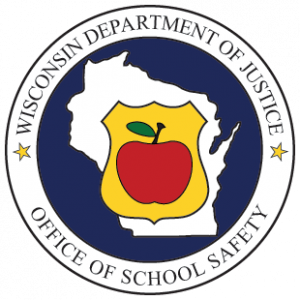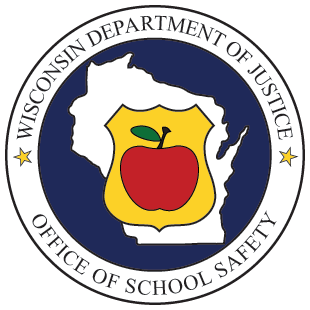 From the Office of School Safety (OSS):
From the Office of School Safety (OSS):
The Office of School Safety has received many questions regarding the effects of Covid-19 on school safety drills. There has not been a statutory change to Wis. Stat. 118.07(4)(cp), which requires that “pupils are drilled…in the proper response to a school violence event in accordance with the school safety plan in effect for that school building.” However, how you conduct drills may vary. Schools previously considered the age of the students and school-specific practices when designing such drills. Now schools must also take into account whether schools are meeting virtually or in person and how drills can be conducted while mitigating the risk of virus transmission.
First, schools should consult with their local health department regarding social distancing and protective practices, and follow any guidelines regarding masks, etc. Additional guidance regarding tornado and fire drills has been provided by the Department of Public Instruction in the 8/24/20 update to the “COVID-19 Regulatory Flexibility Framework Provisions for the 2020-21 School Year.”
If your school has students on-site, consider whether adapting the school safety drill in any of these ways would be beneficial:
- Require masks and social distancing.
- Divide the school into sections and only drill one section at a time (a rolling drill).
- Perform the drill in “slow motion” – slow down the drill to create time, space, and distance between students.
- Practice alternate evacuation routes (simulating an exit blocked by smoke, barriers, or suspicious activity) so classes evacuate to different locations away from other classes. If combined with a rolling drill, one class per evacuation point/route may be possible.
- Practice lockdown rather than evacuate. Have a small portion of the class move to the safe area, rather than everyone congregating there at the same time, and repeat the drill until everyone has a turn.
- If a road is adjacent to your evacuation point, ask your law enforcement agency whether that roadway could be blocked off during drills to accommodate social distancing.
If a school rotates the physical attendance of different student cohorts, schools should repeat the drill for each cohort to ensure everyone is drilled.
If your school is operating virtually, consider whether delaying this fall’s drill a few weeks to later in 2020 would increase the likelihood that students are physically present. If the school will operate virtually for the remainder of 2020, OSS recommends that you consider non-traditional “virtual drills.” Alternately, you may forego the school safety drill following similar reasoning to DPI’s 8/24 memo: “Fire drills must be conducted at least once each month that the school is occupied with pupils. If all classes are virtual and there are no in-person classes, then drills do not have to be performed. This is similar to what occurs during the summer when classes are usually not being conducted.” Schools must still report the [non-performed] drill following the submission process described in the next section.
Examples of “virtual drills” could include the following:
- Have a discussion regarding what constitutes “concerning behavior” (such as school threats, suicidal indicators, approval of violence, et al.) that should be reported. Discuss how students should report their concerns to a trusted adult in your school, or to the Speak Up Speak Out confidential tip line. OSS’s Erin Armbrust is leading webinars that offer materials and guidance in promoting this tip line. “Drill” students with hypothetical situations and provide feedback to them on their responses.
- Introduce, review, and verbally rehearse your school’s safety plan. For example, you might view the new Standard Response Protocol video, followed by a “when/then” discussion of which response would apply to hypothetical school safety hazards.
- Share your virtual drill ideas and suggestions with OSS Deputy Director Glenn Rehberg. Innovative suggestions may be shared in an upcoming newsletter (and submitters will be entered into a drawing for a very collectible coffee mug!)
Reporting School Safety Drills
Wis. Stat. § 118.04(4)(e) requires schools to report their annual school safety drills to OSS, and the next reporting deadline is 12/31/2020. Please refer to the “ACT 143 2020-2021 SUBMISSIONS” article within this newsletter for highlights regarding that process (complete information and directions are available here). If your school has not yet submitted the 2019-2020 drill report due 12/31/2019, your school may still upload these documents (or an explanation as to non-completion of spring 2020 drills due to the unforeseen and sudden cancellation of in-person classes). 2020-2021 documents must be uploaded by 12/31/2020 to meet this year’s deadline. If a drill is not performed due to all-virtual instruction, describe that in the appropriate section.
Additional Drill Resources
Drills should always follow best practices as outlined by the National Association of School Psychologists, the National Association of School Resource Officers, and OSS. This NASP/NASRO document, the OSS webinar “Best Practice Considerations for Schools in Active Shooter and Other Armed Assailant Drills,” the OSS School Safety Framework, and the I Love U Guys Foundation discuss how to properly conduct beneficial drills.

